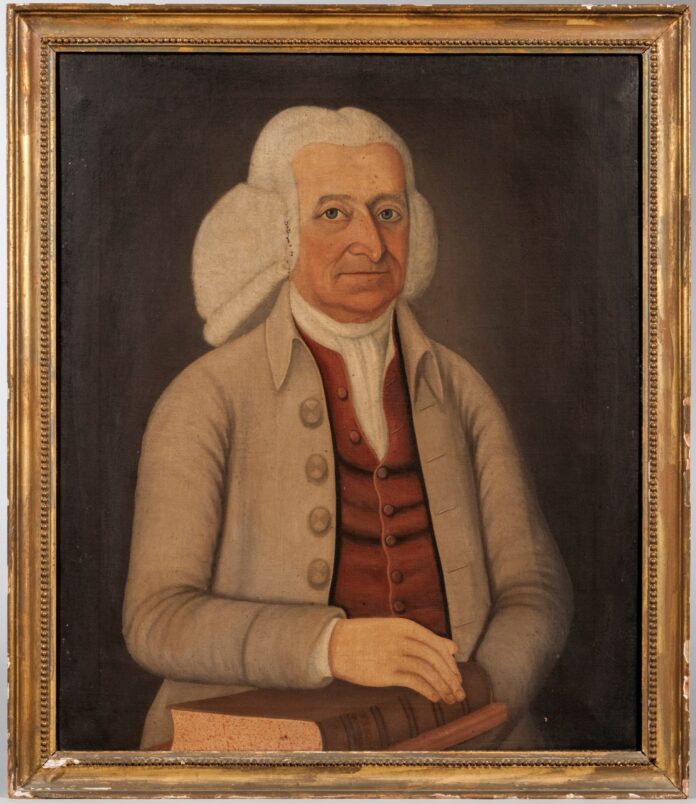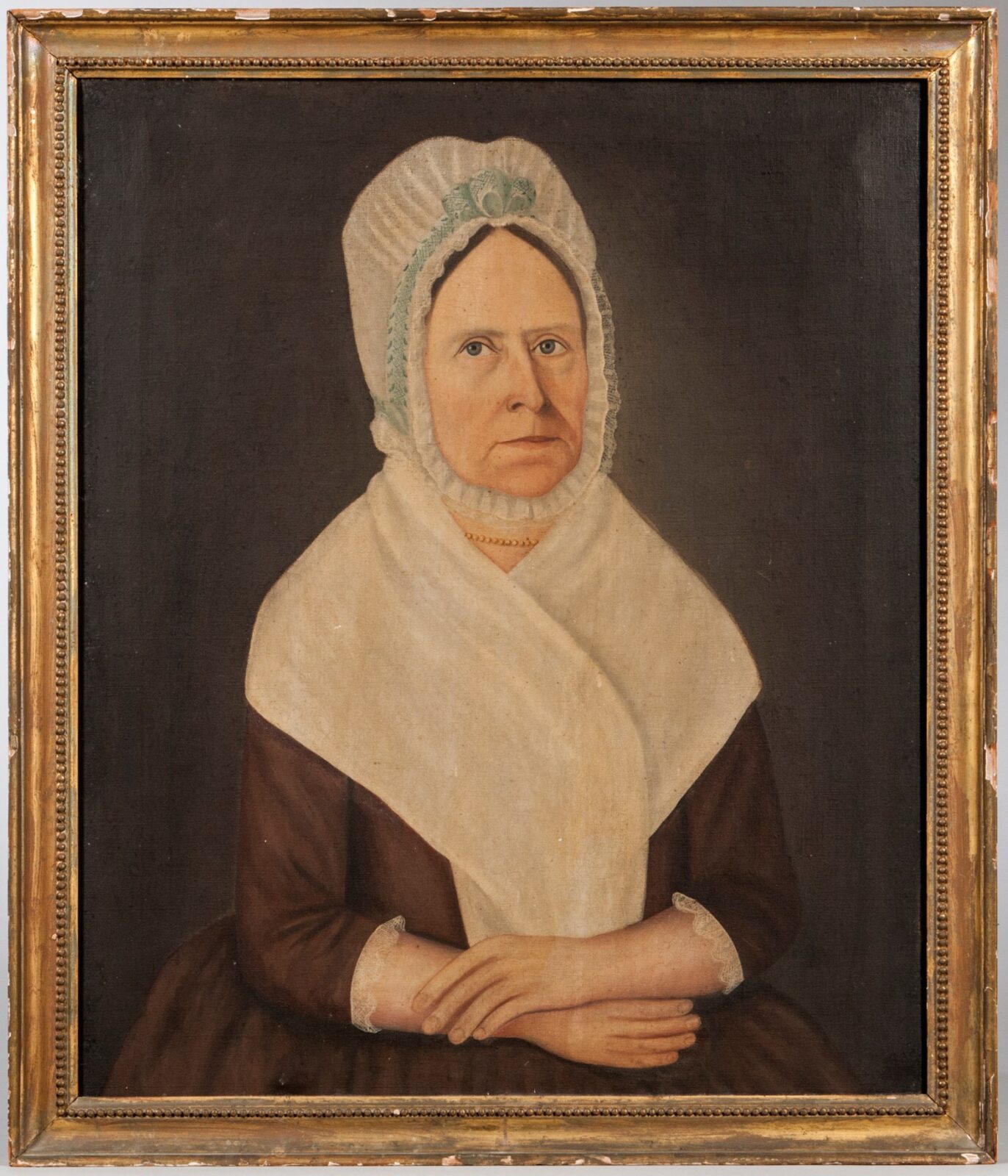
Portraiture was enormously popular in the United States in the decades surrounding the American Revolution. At first, only a small upper class had the means to commission these pictures, which would typically be painted by classically trained artists who had come over from Europe, conveying financial as well as social clout. However, with the growth of an upwardly mobile middle class, portraiture became accessible to a broader swath of Americans. It evolved into a veritable industry, with portrait painters, some of whom were self-taught and American-born, traveling from town to town in search of commissions.
Born to a large, well-off family in Hampton, Connecticut, John Brewster Jr. (1766-1854) studied painting with a local reverend and went on to find success as a portraitist for hire traveling through post-Revolution New England. Though Brewster’s skill as an artist made him sought-after, and his social status widened his access to potential patrons, he was born Deaf in a country that had few resources for Deaf people. He communicated with clients through gestures or in writing.
Well into his painting career, at the age of 51, Brewster attended one of the earliest American schools for the Deaf, which opened in Hartford, Connecticut in 1817. He was one of seven students in the school’s inaugural class, a group that would play an important role in the standardization of American Sign Language. Brewster spent three years in school before settling in Maine, where he continued his portraiture practice without the burdens of constant travel.

A pair of portraits by Brewster have been promised to the American Folk Art Museum (AFAM) in New York on the occasion of its 60th anniversary. These are the first works by Brewster to enter the collection of AFAM, which mounted an exhibition of his work, A Deaf Artist in Early America: The Worlds of John Brewster, in 2006. The half-scale portraits, which were likely painted in 1798, depict Benjamin Titcomb and Anne Pearson Titcomb, a married couple in Maine, against dark backdrops with little embellishment. Benjamin rests his hand on a book; Anne’s are folded across her lap.
“The portraits of Benjamin and Anne Titcomb are from early in Brewster’s career but already show characteristics of the artist’s powerful style,” Emelie Gevalt, the curator of folk art at AFAM, told Hyperallergic. “The sitters’ direct gazes, set against plain backgrounds, create a sense of stark authenticity for which Brewster is admired. The couple’s conservative dress and upright bearing emphasize their status as affluent and respected members of their community in Portland, Maine.”
Early New England People, a genealogical book published in 1882, explains that Benjamin Titcomb was a blacksmith who went on to be a deacon of the First Church and subsequently a representative to the General Court. The book, which was written by Sarah E. Titcomb, quotes Benjamin’s son’s description of his father: “He was a man of fine personal appearance, tall and well-proportioned. He dressed well, wearing a full-bottomed wig and small-clothes, and was a very worthy and influential citizen.” (Gevalt noted that the practice of wearing a formal full-bottomed wig was no longer common at the point, indicating that the deacon was particularly attentive to his appearance.) Benjamin died in 1798, the same year inscribed on the back of Anne’s portrait; she would follow two years later.






















